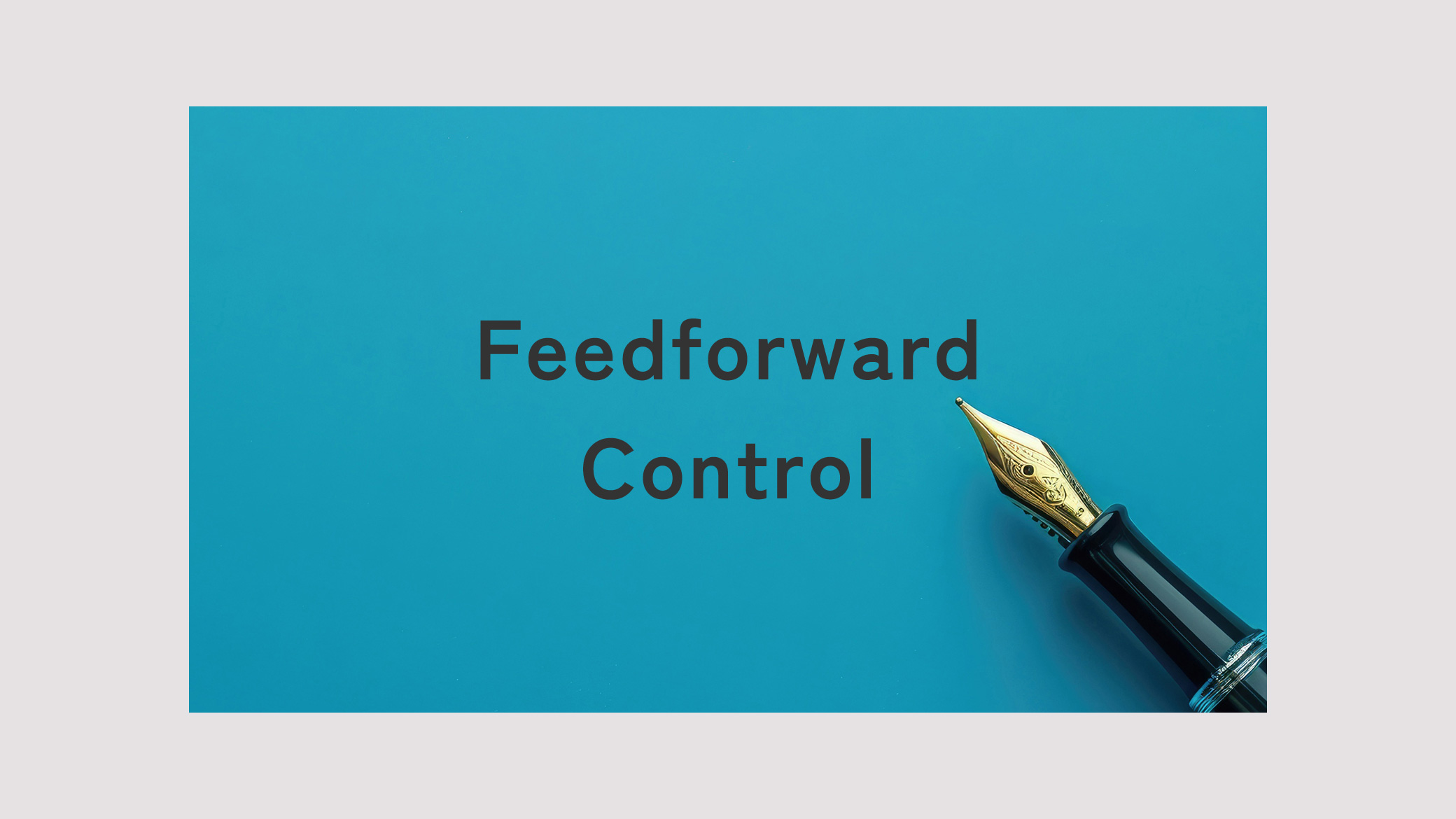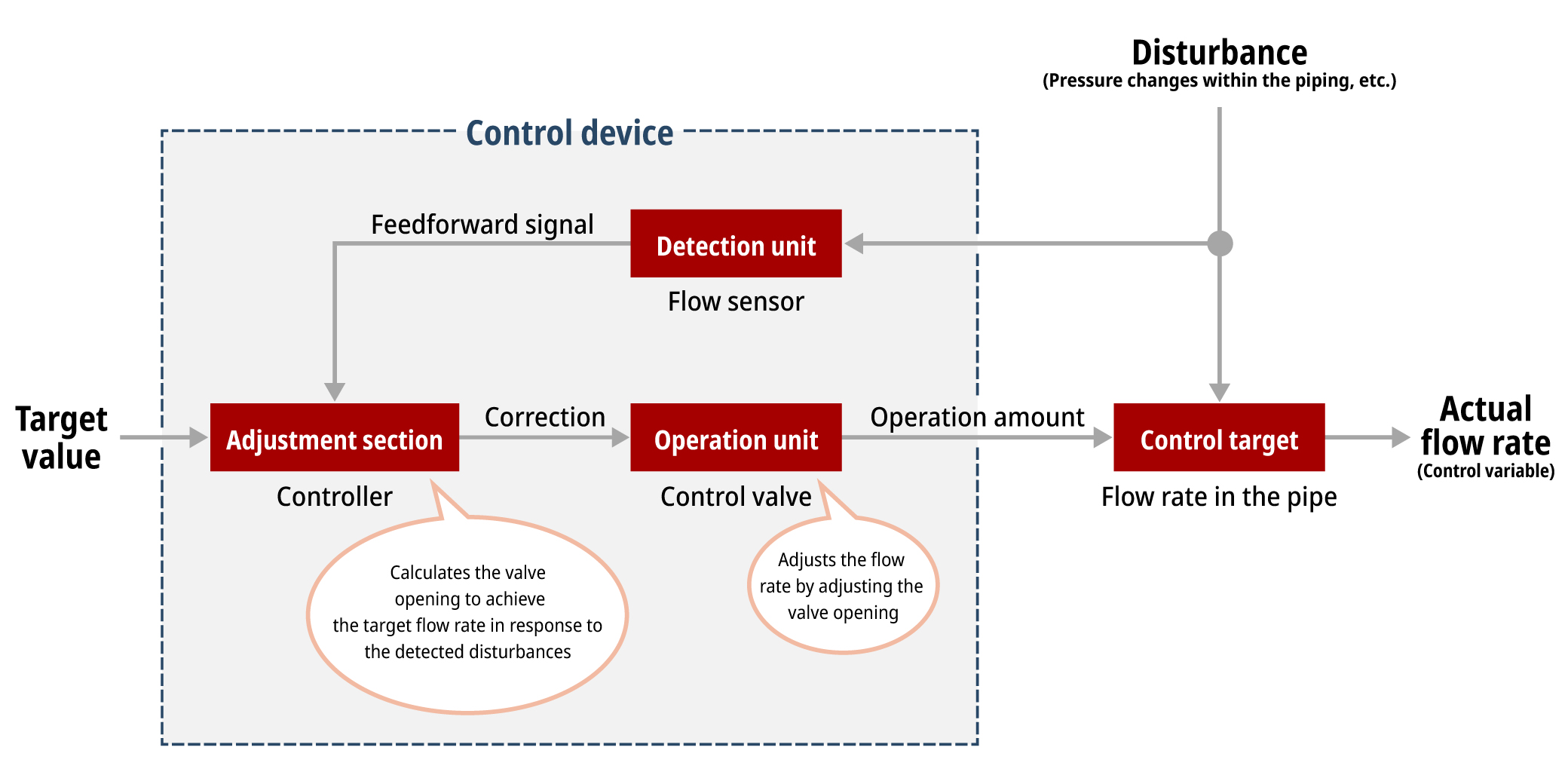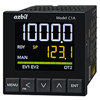with azbil
Trivia
Feedforward Control

Feedforward control is a control method that determines the control input by predicting the state of a system before any errors occur. This method makes it possible to detect and adjust for external factors (disturbances) within a predictable range before any changes occur in the controlled object. As a result, errors can be addressed before they occur, enabling quick reactions to disturbances, thereby improving control accuracy, and increasing the system’s response speed. Another control method that plays an important role is feedback control, which measures the difference (deviation) between the measured value and the target value of the controlled object and determines the control input based on that difference. Both feedforward control and feedback control are essential elements in control systems.
However, while feedforward control can achieve high control accuracy and fast system response speeds if predictions are accurate, it also has limitations. When predictions are inaccurate or when external factors affecting the system cannot be predicted, feedforward control may not function effectively. For this reason, it is common to use feedforward control in combination with feedback control.
The diagram shows how feedforward control works. Unlike feedback control, it does not form a loop, and the signal flow moves in one direction, which is why it is also known as open-loop control.

Feedforward control is used in various fields. Here are some specific examples of using feedforward control:
- ① Temperature control systems, such as those used in air conditioning equipment
- ② Robot arm position control systems
- ③ Temperature control systems for electric instant water heaters
In temperature control systems used in air conditioning equipment, external factors such as changes in outside temperature and the activity level of people indoors (heat generation) act as disturbances, affecting the indoor temperature. By utilizing feedforward control, it is possible to predict outside temperatures and human activity and adjust the output of the air conditioning system in advance, thereby preventing sudden changes in room temperature and maintaining a stable indoor environment.
In position control systems for robot arms, external forces and torques (such as loads or vibrations) applied during the machine’s operation can cause variations in the arm’s position. By using feedforward control, it is possible to predict loads and external forces in advance and correct the arm’s movement accordingly.
In temperature control systems for electric instant water heaters, disturbances such as fluctuations in water supply, water pressure, and flow rate during use can affect the outlet water temperature. By using feedforward control, input information such as current water temperature and flow rate can be used in advance to adjust the heater output. This allows you to get hot water at the right temperature in a short time.
In this way, feedforward control improves the accuracy of the control itself and speeds up the system’s response, making the control more efficient and environmentally friendly.
- *This article was translated from the Japanese version of the article published on April 10, 2025.

 Related information
Related information
